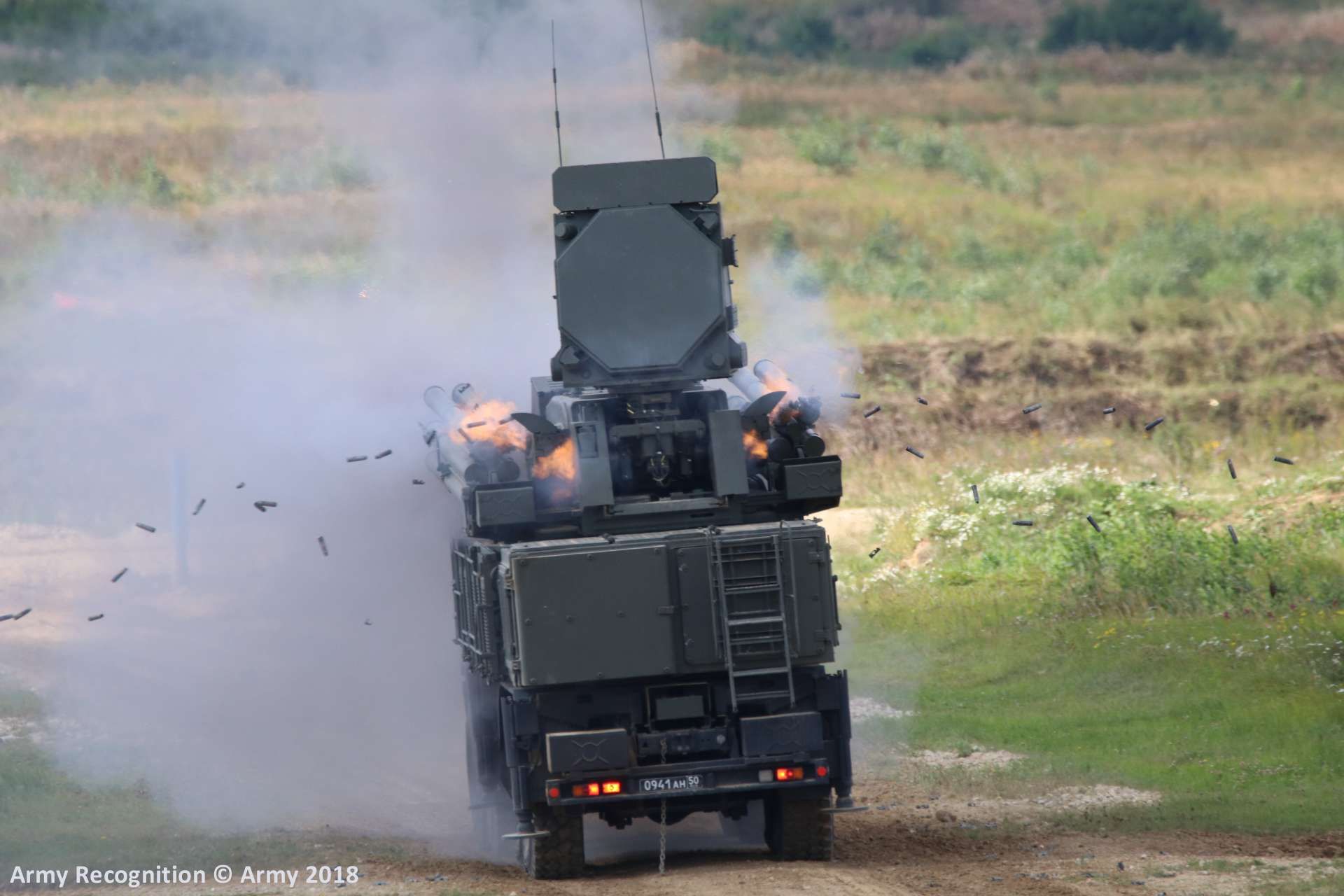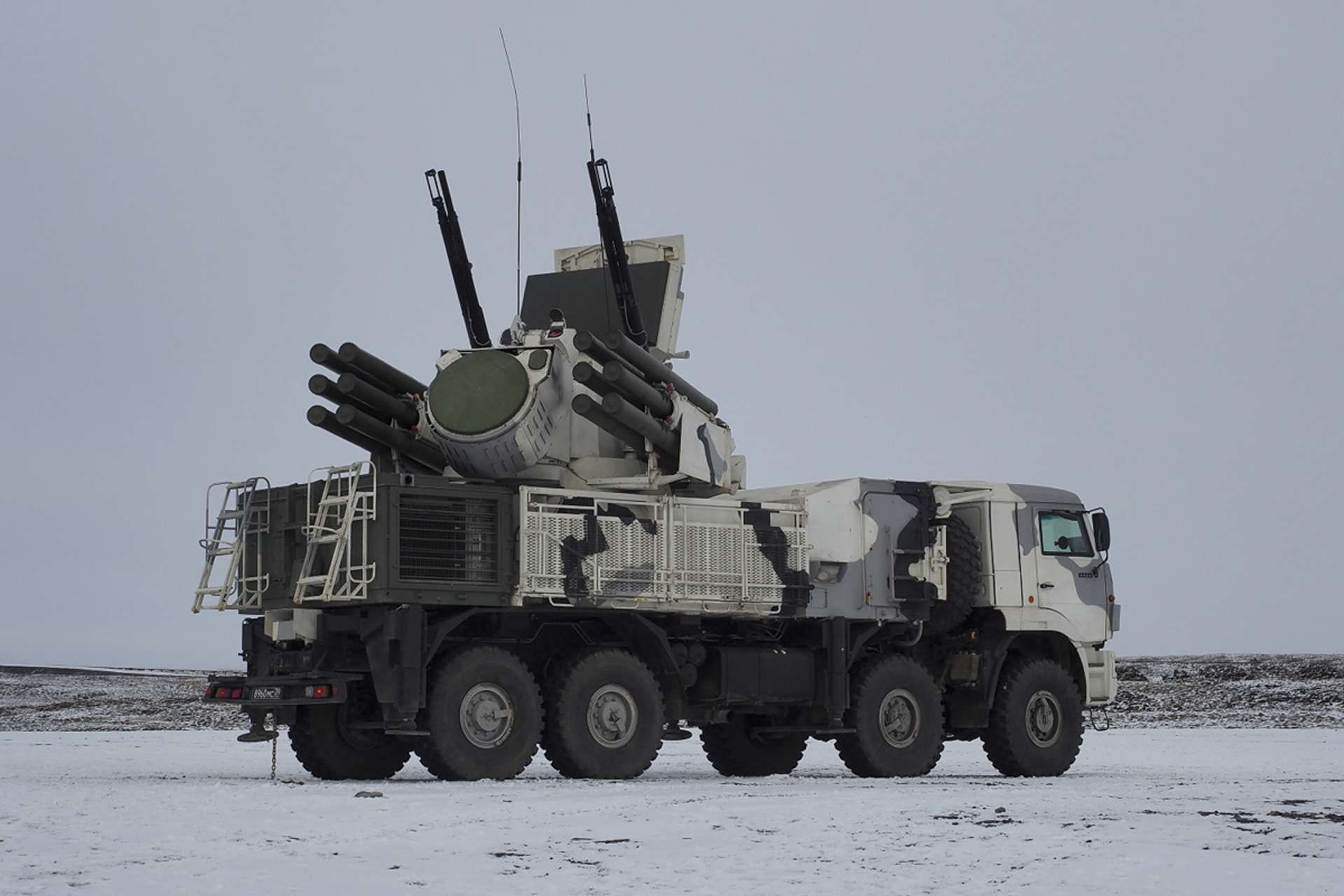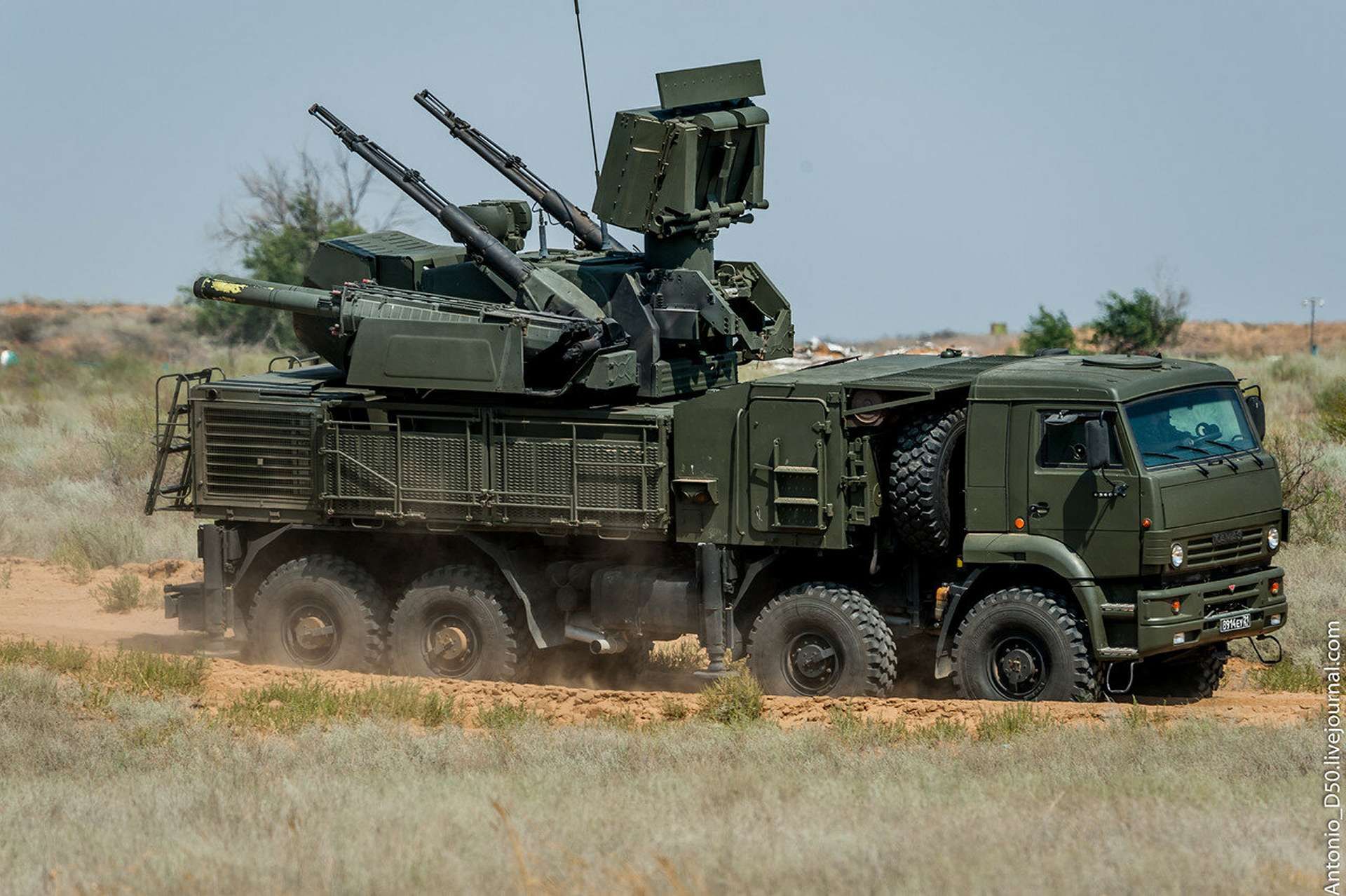Breaking News
Russian leaks: Discover how Russia's Pantsir-S1 air defense systems protect Putin from Ukrainian drones.
On July 15, 2024, Mark Krutov revealed on Twitter that Russia has recently mounted additional Pantsir-S1 air defense systems on towers 3.7 kilometers away from Vladimir Putin's residence on Valdai Lake, according to updated Google Earth imagery from May 6, 2024. This deployment has drawn attention following a leak by the Ukrainian hacker group Cyber Resistance, which provided a detailed analysis of the Pantsir-S1 systems.
Follow Army Recognition on Google News at this link

The vehicle carries 12 57E6 missiles and 1404 rounds of 30-mm ammunition, which can be fired in automatic, semi-automatic, and manual modes. (Picture source: Vitaly Kuzmin)
On June 15, 2024, Ukrainian hackers from the Cyber Resistance group published email correspondences of high-ranking Russian officers. These publications revealed restricted information from the military educational center (VUC) at Moscow State Technical University (MSTU) named after Bauman. The leaked documents, provided to the international intelligence community InformNapalm, included closed manuals on key Russian air defense systems, such as the Tor-M1 and the Pantsir-S1, and personal data of over a hundred air defense and missile defense officers responsible for securing Moscow's airspace.
As reported by Army Recognition on July 15, 2024, two significant series of leaks unveiled a substantial quantity of Russian classified documents detailing the organization and personnel of Moscow's air defense systems, as well as various manuals about notable Russian military assets. These included the Tor-M1 air defense system and the T-80BVM, T-90S, and T-90M main battle tanks, which are important to Russia's military operations, especially in Ukraine. Further analysis of these documents revealed that the leak from the Cyber Resistance group also included the manual of the Pantsir-S1 air defense system.
Since the start of the war with Ukraine, Russia has increased the construction of new air defense structures, including fortified embankments and towers, and the relocation of various Pantsir systems to strengthen defenses in the Moscow region amidst ongoing aerial attacks on Russian military air force bases by Ukrainian drones. The latest installation discovered by Mark Krutov followed the relocation of a previous Pantsir system reported in January 2023, which was 6 kilometers away in the village of Yascherovo, as well as the protection of state buildings, including the Ministry of Defense Offices with Pantsir-S1 systems mounted on the roofs.

The construction of fortified embankments and towers constructed from metal or reinforced concrete in the Moscow regions prompted the relocation of Pantsir-S1, Pantsir-S2, and Arctic-specific Pantsir-SA air defense systems. (Picture source: Russian social media)
The Pantsir-S1 air defense system is designed to protect critical military and industrial facilities and reinforce air defense units at low and very low altitudes. It can engage various aerial threats, including precision-guided munitions, UAVs, helicopters, and fixed-wing aircraft. As reported by the leaked manual, the Pantsir-S1 system comprises several key components: the Combat Vehicle (BM) 72V6, the Surface-to-Air Missile (SAM) 57E6, 30-mm Artillery Ammunition, the Transport and Loading Vehicle (TZM) 73V6, and the Command Post (CP) 19S6.
The Combat Vehicle (BM) 72V6 is equipped with a radar and optical-electronic detection system capable of autonomous detection, tracking, and engagement of targets. This radar operates in both centimeter and millimeter-wave bands. The vehicle carries 12 57E6 missiles and 1404 rounds of 30-mm ammunition, which can be fired in automatic, semi-automatic, and manual modes. The vehicle is armored to provide protection for the crew against bullets, shrapnel, and NBC (Nuclear, Biological, Chemical) threats.
The 57E6 missile is designed to engage a wide range of aerial targets at distances from 1200 to 20,000 meters and altitudes from 15 to 15,000 meters. The missile can travel at speeds up to 1300 m/s and is effective against aircraft, helicopters, UAVs, and light-armored ground targets. It is equipped with a high-explosive fragmentation warhead and uses both proximity and impact fuses. The missile’s guidance system combines command guidance with radio command correction and infrared homing for terminal guidance.

The Pantsir-S1's guns have an effective range of 200 to 4000 meters and an altitude reach of 0 to 3000 meters, with a high rate of fire ensuring continuous engagement capability. (Picture source: Army Recognition)
The system also includes 30-mm artillery ammunition, which comes in two types: high-explosive incendiary (HEI) and armor-piercing incendiary tracer (APIT). The HEI rounds are effective against aerial and lightly armored ground targets, while the APIT rounds provide a visible trajectory and are also effective against lightly armored targets. The guns have an effective range of 200 to 4000 meters and an altitude reach of 0 to 3000 meters, with a high rate of fire ensuring continuous engagement capability.
The Transport and Loading Vehicle (TZM) 73V6 supports the system by transporting and reloading ammunition. It can carry 24 57E6 missiles and 2808 rounds of 30-mm ammunition. The vehicle is designed for rapid reloading of combat vehicles, ensuring a continuous supply of ammunition in high-intensity combat scenarios and enabling quick turnaround times between engagements.
Centralized command and control are managed by the Command Post (CP) 19S6, which can oversee up to six combat vehicles. The CP provides automated planning, coordination, and execution of air defense missions, integrating real-time data processing and dissemination. It features digital map displays and advanced communication systems, ensuring secure communication links with higher command, adjacent units, and combat vehicles.

The Pantsir-S1 uses an integrated weapons control system for coordinated missile and gun engagements, with a high degree of automation reducing crew workload and increasing reaction speed. (Picture source: Russian social media)
The Pantsir-S1 system’s combat vehicle carries 12 missiles and 1404 rounds, while the transport-loading vehicle holds 24 missiles and 2808 rounds. The missile engagement range spans 1200 to 20,000 meters, and it can engage targets at altitudes between 15 and 15,000 meters. The guns have an engagement range of 200 to 4000 meters and an altitude reach of 0 to 3000 meters. The system is capable of engaging targets moving at speeds up to 1000 m/s, with the missiles traveling at speeds up to 1300 m/s. Each combat vehicle can simultaneously engage up to four targets, with a fire rate of 12-16 targets per minute and a hit probability of up to 0.9. The system has a reaction time of 4-6 seconds and over 80% jamming resistance. It can be deployed or stowed in 3 minutes, and the time to combat readiness varies from 5 minutes from march, 3 minutes with power on, and 10 seconds from standby.
The Pantsir-S1 system operates effectively under harsh environmental conditions, withstanding wind speeds up to 30 m/s, temperatures ranging from -40 to +60 °C, and relative humidity up to 98% at 35 °C. It remains operational at altitudes up to 3000 meters, in rain intensities up to 5 mm/h, and in dust concentrations up to 2.5 g/m³.
The Combat Vehicle (BM) 72V6 integrates detection, tracking, and engagement systems, with multi-functional radar providing 360-degree coverage and an optical-electronic system enhancing performance in various weather conditions. It uses an integrated weapons control system for coordinated missile and gun engagements, with a high degree of automation reducing crew workload and increasing reaction speed.

The 57E6 missile is designed to engage a wide range of aerial targets at distances from 1200 to 20,000 meters and altitudes from 15 to 15,000 meters. (Picture source: Antonio_D50)
The 57E6 missile operates in complex electronic countermeasure environments, with initial command guidance from the combat vehicle, mid-course correction via radio commands, and terminal infrared homing. The 30-mm artillery ammunition includes HEI rounds for maximum damage to aerial targets and APIT rounds for visible engagement and penetration of light armor, providing continuous engagement capability with a high rate of fire.
The Transport and Loading Vehicle (TZM) 73V6 ensures the rapid reloading of combat vehicles, enabling quick turnaround times and ensuring continuous ammunition supply during high-intensity combat. The Command Post (CP) 19S6 provides centralized control, real-time data integration, advanced communication systems, and secure links with higher command, adjacent units, and combat vehicles.


























